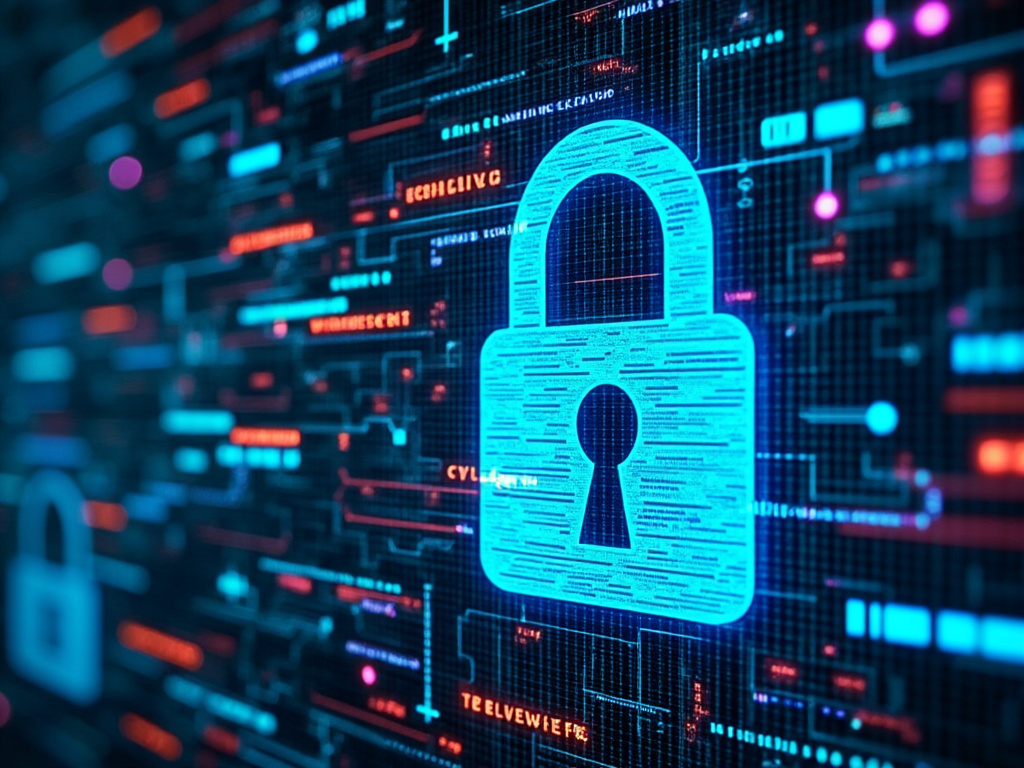As our lives become increasingly digital, cybersecurity threats are escalating in frequency and sophistication. From data breaches and phishing scams to ransomware and malware attacks, cybersecurity threats impact individuals, businesses, and governments globally. These attacks can lead to financial losses, privacy violations, and even national security risks. Understanding these threats and how to counter them is crucial for protecting sensitive data, maintaining privacy, and ensuring online safety.
This article explores the most common cybersecurity threats, their impact, and effective strategies to safeguard your digital assets.
1. Common Cybersecurity Threats and Their Impact
a. Malware (Malicious Software)
Malware is software intentionally designed to cause damage or unauthorized access to systems. Types of malware include viruses, worms, trojans, and spyware, each with different methods of infiltration and damage. Malware often spreads through email attachments, infected websites, and compromised downloads, and it can lead to data theft, system damage, and unauthorized surveillance.
Impact:
Malware can disrupt business operations, cause financial losses, and compromise user privacy. For businesses, malware attacks can damage reputation, customer trust, and lead to costly recovery measures.
b. Phishing Attacks
Phishing is a type of social engineering attack where cybercriminals impersonate legitimate entities to deceive individuals into revealing sensitive information, such as login credentials, credit card details, or personal data. Phishing scams typically arrive via emails, texts, or fake websites that appear legitimate.
Impact:
Phishing can lead to identity theft, financial losses, and unauthorized access to sensitive accounts. For businesses, phishing poses a major security threat, as one compromised employee account can expose entire networks.
c. Ransomware
Ransomware is a type of malware that encrypts a victim’s data and demands payment in exchange for a decryption key. Ransomware attacks are often targeted at organizations with valuable data, including healthcare providers, financial institutions, and government agencies.
Impact:
Ransomware can lead to significant financial losses, operational disruption, and data breaches. In many cases, victims are forced to choose between paying the ransom (with no guarantee of data recovery) and losing valuable information permanently.
d. Data Breaches
A data breach occurs when sensitive, confidential, or protected information is accessed or exposed without authorization. Data breaches can result from vulnerabilities in software, inadequate access controls, or human error.
Impact:
Data breaches can expose personal and financial information, leading to identity theft, financial losses, and legal repercussions. For businesses, data breaches can damage customer trust, incur regulatory fines, and harm brand reputation.
e. Denial of Service (DoS) and Distributed Denial of Service (DDoS) Attacks
DoS and DDoS attacks aim to overwhelm a system, network, or website with excessive traffic, rendering it inaccessible to legitimate users. DDoS attacks are often used to disrupt services, impact business operations, and damage an organization’s reputation.
Impact:
DoS and DDoS attacks can halt business operations, cause revenue losses, and force companies to spend considerable resources on cybersecurity measures and recovery.
f. Insider Threats
Insider threats come from individuals within an organization, such as employees, contractors, or business partners, who have access to sensitive information. These threats can be intentional or unintentional, with insiders misusing access or accidentally causing security breaches.
Impact:
Insider threats can lead to data theft, fraud, and network compromise. Insider-related incidents are particularly challenging to detect and prevent, as they involve users with legitimate access.
2. Cybersecurity Threat Landscape: Trends and Evolving Tactics
a. Rise of Advanced Persistent Threats (APTs)
Advanced Persistent Threats (APTs) are prolonged and targeted cyber attacks typically orchestrated by highly skilled actors, including nation-states. APTs aim to remain undetected for long periods, often infiltrating critical infrastructure, government agencies, and large corporations.
b. Increase in Cyber Attacks on Remote Workers
As remote work becomes more common, employees working from home are more vulnerable to cyber attacks. Insecure home networks, lack of VPN usage, and poor password management increase the risk of unauthorized access and data breaches.
c. Growth in Internet of Things (IoT) Vulnerabilities
The expansion of IoT devices—such as smart home gadgets, wearable tech, and industrial sensors—has created new security challenges. Many IoT devices have weak security controls, making them easy targets for cybercriminals to exploit and use as entry points into networks.
d. Use of AI and Machine Learning in Cyber Attacks
Cybercriminals are increasingly using AI and machine learning to automate attacks, evade detection, and target systems more precisely. AI-powered cyber attacks can adapt to defenses in real time, making them more challenging to counter.
3. Strategies to Protect Against Cybersecurity Threats
a. Use Strong Passwords and Enable Multi-Factor Authentication (MFA)
Using strong, unique passwords for each account and enabling multi-factor authentication (MFA) adds layers of security. MFA requires a second form of verification, such as a code sent to a mobile device, making it more difficult for attackers to gain unauthorized access.
b. Regular Software Updates and Patching
Cybercriminals often exploit vulnerabilities in outdated software. Regularly updating operating systems, applications, and firmware ensures that systems have the latest security patches, reducing the risk of malware infections and attacks.
c. Employee Training and Awareness
Employees are often the first line of defense against cyber threats. Conducting regular cybersecurity training programs helps employees recognize phishing attempts, avoid suspicious downloads, and understand safe online practices.
d. Use Firewalls and Antivirus Software
Firewalls and antivirus software act as a barrier between trusted and untrusted networks, preventing malware and other threats from infiltrating devices. These tools can identify malicious activity and block suspicious connections, providing an essential layer of protection.
e. Data Encryption and Secure Backups
Encrypting sensitive data ensures that, even if it is intercepted or accessed without permission, it remains unreadable. Additionally, creating secure, regular backups can help restore systems quickly after a ransomware attack or data breach.
f. Implementing Network Segmentation
Network segmentation involves dividing a network into smaller segments to prevent unauthorized access from spreading across an organization. This approach minimizes the damage that a cyber attack can cause by containing the threat within a specific part of the network.
4. Role of Governments and Organizations in Cybersecurity
a. Regulatory Compliance and Data Protection Laws
Governments around the world are implementing stricter data protection regulations, such as the General Data Protection Regulation (GDPR) in Europe and California Consumer Privacy Act (CCPA) in the U.S. Compliance with these regulations requires organizations to implement robust security measures to protect personal data and privacy.
b. Cybersecurity Frameworks and Standards
International cybersecurity standards, such as ISO/IEC 27001 and NIST Cybersecurity Framework, provide guidelines for managing cyber risks. Organizations can adopt these frameworks to strengthen their security posture, identify vulnerabilities, and respond to threats more effectively.
c. Public and Private Sector Collaboration
Collaboration between the public and private sectors is essential for addressing cybersecurity threats. Governments, law enforcement agencies, and businesses must work together to share threat intelligence, develop response strategies, and create a safer digital environment.
d. Investing in Cybersecurity Innovation and Research
Ongoing research and innovation in cybersecurity are critical to staying ahead of cyber threats. Governments and organizations are investing in technologies like artificial intelligence, blockchain security, and quantum encryption to enhance cybersecurity measures and counteract evolving threats.
5. Future of Cybersecurity: Emerging Trends and Technologies
a. Artificial Intelligence in Cyber Defense
AI is revolutionizing cybersecurity by enabling rapid threat detection, predictive analysis, and automated response. AI can analyze large volumes of data to identify unusual patterns, allowing cybersecurity teams to respond to threats in real-time.
b. Zero Trust Security Model
The Zero Trust model assumes that no one, whether inside or outside the network, can be trusted by default. This model requires strict identity verification, continuous monitoring, and minimal access privileges, providing a robust defense against both external and insider threats.
c. Quantum Cryptography
Quantum cryptography promises to enhance data security by making encryption virtually unbreakable. As quantum computing advances, traditional encryption methods could become obsolete, making quantum cryptography essential for protecting sensitive data.
d. Blockchain for Data Integrity
Blockchain technology offers potential for cybersecurity, particularly in securing data integrity, preventing unauthorized access, and tracking changes to digital assets. By decentralizing data storage, blockchain could reduce vulnerabilities in centralized systems.
Conclusion
The rise in cybersecurity threats underscores the importance of a proactive approach to online safety and digital protection. By understanding these threats, staying informed, and adopting best practices, individuals and organizations can minimize risks and strengthen their defenses. The cybersecurity landscape is evolving rapidly, and as cyber threats grow more sophisticated, continued investment in innovative technologies and collaborative efforts will be essential to securing a safer digital world.
Cybersecurity is not solely the responsibility of IT professionals but requires a collective effort from individuals, businesses, and governments to build a resilient digital ecosystem.
FAQs
1. What are the most common cybersecurity threats?
Common threats include malware, phishing, ransomware, data breaches, DoS attacks, and insider threats, each with unique methods and impacts.
2. How can I protect myself from phishing attacks?
To avoid phishing, be cautious with unsolicited emails, verify the sender’s identity, avoid clicking on suspicious links, and enable multi-factor authentication for added security.
3. What is ransomware, and how does it work?
Ransomware is malware that encrypts a victim’s data, demanding payment for decryption. It often spreads through malicious downloads and phishing emails.
4. What is the Zero Trust security model?
Zero Trust is a cybersecurity approach that requires verification from everyone trying to access a system, assuming no one can be trusted by default.
5. Why is employee training important in cybersecurity?
Training helps employees recognize and avoid cyber threats like phishing, reducing the risk of human error and strengthening an organization’s security posture.












